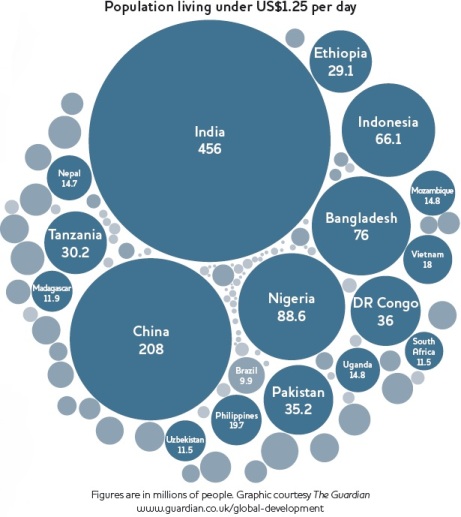Andy Sumner has published a new paper which argues that the global poverty problem has changed because the countries in which most of the world’s poor liver are no longer classified as low-income countries (LICs). In 1990, about 93 per cent of the world’s poor people lived in LICs. Today, there are still about 1.3 billion poor people, but about three-quarters of them live in what are now classified as middle-income countries.
This shift has profound implications for development policy. It highlights the importance of ensuring that growth reduces poverty. It raises questions for the allocation of traditional aid, and about the legitimacy and effectiveness of intervention by outsiders to influence the distribution of income within other countries.
In a new episode of Development Drums, I discuss these issues with Andy Sumner and Claire Melamed (Head of the Growth and Equity Programme at ODI). We discuss what the new data tell us, and what it means for aid and development policy.
You can listen to Development Drums on your computer at the website (http://developmentdrums.org) or download it (from here) to your MP3 player. Alternatively, you can subscribe to Development Drums on iTunes free of charge (search for “Development Drums” in the iTunes store).






2 responses to “The new bottom billion [podcast]”
[…] The new bottom billion, Owen Abroad blog. Discussion of a new paper by Andy Sumner which argues most of the world’s poorest live in middle income countries and link to a related Development Drums podcast. […]
[…] here to read the rest: The new bottom billion [podcast] […]